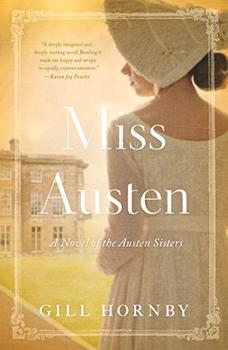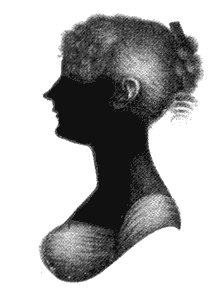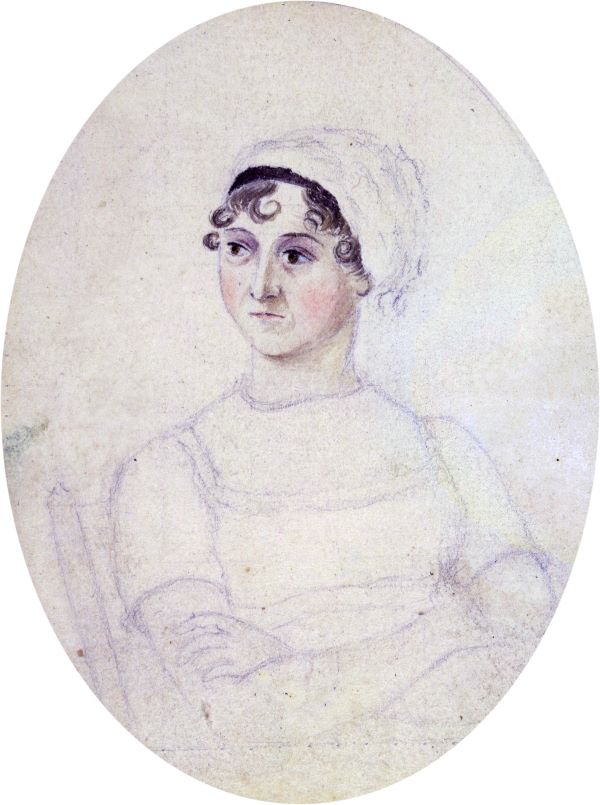Summary | Excerpt | Reading Guide | Discuss | Reviews | Beyond the Book | Read-Alikes | Genres & Themes | Author Bio

This article relates to Miss Austen
 Gill Hornby's novel Miss Austen explores Jane Austen's life through the point of view of her beloved older sister, Cassandra. Cassandra is thought to have been Jane's closest companion and confidante. The two were inseparable to the extent that their mother reportedly once commented, "If Cassandra's head had been going to be cut off, Jane would have hers cut off too." While Cassandra clearly had interests and a life of her own, her relationship with her now-famous sister was of great importance to her, and she had a significant influence on Jane's work and legacy.
Gill Hornby's novel Miss Austen explores Jane Austen's life through the point of view of her beloved older sister, Cassandra. Cassandra is thought to have been Jane's closest companion and confidante. The two were inseparable to the extent that their mother reportedly once commented, "If Cassandra's head had been going to be cut off, Jane would have hers cut off too." While Cassandra clearly had interests and a life of her own, her relationship with her now-famous sister was of great importance to her, and she had a significant influence on Jane's work and legacy.
Cassandra Elizabeth Austen was born on January 9, 1773 to Reverend George Austen and Mrs. Cassandra Leigh Austen. Her sister Jane was born two years later, and the siblings remained the only girls in a family of six brothers. As Reverend Austen ran a boarding school in their home in Steventon, Hampshire, both girls received education from an early age, studying art, music and other subjects. They also briefly attended Mrs. Latournelle's Ladies Boarding School in the Abbey House School in Reading between 1785 and 1786. According to their mother, Jane insisted on going along with Cassandra to the school, even though she was considered too young for the level of education it offered.
Shortly after returning home from Reading, Jane began to write her first stories, one of which was The Beautifull Cassandra, a short, humorous novel dedicated to her sister. Cassandra, who had taken up drawing and painting, contributed illustrations to Jane's fictional work The History of England, providing portraits of historical figures for the book. Cassandra also went on to complete pencil and watercolor portraits of Jane.
Sometime in or around the mid-1790s, Cassandra became engaged to Thomas Craven Fowle, a former student of her father's. The marriage was postponed for quite a while due to Fowle's lack of money, and on a trip to the West Indies, where he was serving as a military chaplain, he contracted yellow fever and died. Cassandra supposedly never recovered from his death, and never considered marriage again. Some have speculated that Jane's own decision to remain unmarried may have been influenced by her sister's experience, and that the happy endings Jane created for some of her novels, such as Pride and Prejudice, were shaped by her sympathy for Cassandra's loss.
 After Reverend Austen's death in 1805, which occurred when the family was residing in Bath, Cassandra continued to live with Jane and their mother. In 1809, the three women moved to Chawton, near their former home in Stevenson, settling into a small house on an estate owned by Cassandra and Jane's brother Edward. Cassandra outlived her sister, who died in 1817 at 41 (possibly of tuberculosis), and continued to live in Chawton after her mother's passing in 1827 until her own death in 1845 at the age of 72.
After Reverend Austen's death in 1805, which occurred when the family was residing in Bath, Cassandra continued to live with Jane and their mother. In 1809, the three women moved to Chawton, near their former home in Stevenson, settling into a small house on an estate owned by Cassandra and Jane's brother Edward. Cassandra outlived her sister, who died in 1817 at 41 (possibly of tuberculosis), and continued to live in Chawton after her mother's passing in 1827 until her own death in 1845 at the age of 72.
Cassandra has received much criticism for her handling of Jane's estate, particularly for her decision to burn some of her sister's letters, a subject covered in Miss Austen. However, Cassandra is also responsible for the preservation of many of Jane's letters, as well as the only two surviving firsthand portraits of the famous author.
Silhouette of Cassandra Austen by unknown artist
Portrait of Jane Austen by Cassandra Austen, circa 1820
Filed under People, Eras & Events
![]() This "beyond the book article" relates to Miss Austen. It originally ran in May 2020 and has been updated for the
March 2021 paperback edition.
Go to magazine.
This "beyond the book article" relates to Miss Austen. It originally ran in May 2020 and has been updated for the
March 2021 paperback edition.
Go to magazine.
Your guide toexceptional books
BookBrowse seeks out and recommends the best in contemporary fiction and nonfiction—books that not only engage and entertain but also deepen our understanding of ourselves and the world around us.